

Last week I tried to explain, in easy to understand terms, how lasers work. Of course this is a very complicated subject involving physics and science so I tried to make it simple. What you should try to understand is this....with lasers in Cosmetic and vein surgery, what we are trying to accomplish is using the right wavelength of light to excite or remove a certain color or tissue. Over the next few weeks, I will attempt to help you understand what is possible using lasers. I hope I am successful.
Today I am going to discuss how we use lasers to remove tattoos.
When I was a kid....a long time ago....tattoos were one of the things that were considered very exotic. You only ever saw them on merchant marines, sailors, WWII vets, etc. I'm not sure when they came into vogue, but today, they are more than common. Whether good or bad, they have also become much more complicated.
.jpg) (Typical WWII era tattoo...single color, small in size, shallow depth of ink)
(Typical WWII era tattoo...single color, small in size, shallow depth of ink)
Todays tattoos have multiple colors, can be very large, and use technology that puts the ink in the skin with more uniformity and depth.
.jpg) (new tattoo...larger, more colors, broad spacing, deeper pigment)
(new tattoo...larger, more colors, broad spacing, deeper pigment)
The other thing we see is that the inks are mixed to create some of these colors which makes it more difficult to remove.
People get tattoos for various reasons and they usually get them when they are young. Later in life, as skin changes and we age, they may become less attractive...and...styles change. Some designs may fall out of vogue. Another problem is employment. Visible tattoos that are difficult to conceal may become a problem with some job seekers. They were put on without regard for the future. We run into this often. Individuals want to advance in a job but cannot because of policies against visible body art. For these reasons, many people want them removed.
The simple fact is that tattoos are by nature associated with scar tissue which can never be removed. For this reason, the skin can never be returned to its pristine, pre-tattoo state... but we can get close... most of the time. In comes the q-switched laser (see last weeks blog for information on what this means). The ink in a tattoo is deposited in the layers of the skin in "globs". These packets of ink are a foreign body and our immune system is constantly eating away at them. They are large though and this takes time....lots of it. If you look at an older tattoo, the color is not as vivid, real old tattos may fade completely, and this is why. By choosing the right wavelength of laser light and firing it at the ink there is a percussive effect that breaks up the "globs" into more manageable smaller deposits. The body can handle these quicker and easier.
The easiest tattoos to remove are the black and red ones. The q-switched 1064nm yag laser hits black very well and the q-switched 532 nm hits red. When fired at the ink, there is a pop as it is dispersed into smaller packets that the immune system can handle. The idea is to break up the ink without creating a lot of heat. Too much heat can cause a burn and create a tattoo shaped burn scar. The harder colors are greens, blues, and pastels. For these we have to use blended wave lengths or pulsed dye lasers that have less quality and power. Black and red tattos can usually be removed in several treatments 6-9, the other colors can take years to remove. The other factor is the quality of ink used. Some inks are easy and others are not. Some inks contain iron oxides that are impossible to treat without creating heat AND resulting scar tissue. Fortunately we see these inks infrequently. That is what makes tattoo removal difficult and somewhat unpredictable. There is a movement to standardize ink and this would be good. It would make the removal process much more standardized as well. Ethnic skin adds a whole other dimension to removal as pigment in the skin also attracts the light and changes in skin color can occur after removal that may be permanent.
Tattoo removal without local anesthetic is not without discomfort. We usually use topical anethesia at a minimum and injected local on most. Treatments are usually quick and done at 6 week intervals to allow the body to catch up absorbing the ink. Removal can be costly due to the number of treatments and the expense of the laser equipment. Q-switched lasers are not cheap and it takes multiple devices due to the different wavelengths required.
That's it...tattoo removal in a nutshell. It is much more complicated but I don't want to overwhelm. Come see us at Total Body Surgical for a no cost evaluation and estimate if you want your tattoo removed....Call 918-786-7780 for an appointment to see our tattoo removal specialist or fill out the contact form and we will call you!!
Don't forget our special pricing on liposuction, lap bands, and nail fungus too.


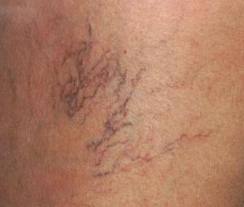 The veins in this picture are perfect....why?? Remember that laser light is attracted to pigment. The darker the pigment, when the laser light hits it, heat is generated, the small vein is injured, the flow stops and the vein is gone. After lasering the vein it turns red and forms a clot that slowly dissolves. I use the Cutera 1064 laser for the darker veins. For veins that have a lighter and more red pigment we use the KTP or 536 wavelength laser.
The veins in this picture are perfect....why?? Remember that laser light is attracted to pigment. The darker the pigment, when the laser light hits it, heat is generated, the small vein is injured, the flow stops and the vein is gone. After lasering the vein it turns red and forms a clot that slowly dissolves. I use the Cutera 1064 laser for the darker veins. For veins that have a lighter and more red pigment we use the KTP or 536 wavelength laser.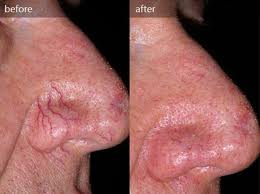
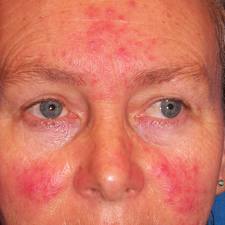
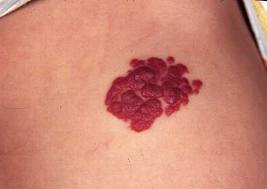 These areas occur in the young and old and anywhere on the body. They can be very small. They can also be very large. Most of these can be closed with the laser. Larger ones may require several treatments. They turn dark, dry up, and are usually gone.
These areas occur in the young and old and anywhere on the body. They can be very small. They can also be very large. Most of these can be closed with the laser. Larger ones may require several treatments. They turn dark, dry up, and are usually gone.



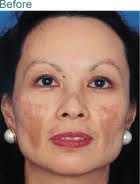 is picture shows melasma, aka "pregnancy mask". It is caused by sun in combination with hormonal changes. It is quite common and cases can vary a great deal in severity. These changes can occur on anyone but seem to be worse in ethnic skin. It can occur over the entire face but is the most common on the cheek area.
is picture shows melasma, aka "pregnancy mask". It is caused by sun in combination with hormonal changes. It is quite common and cases can vary a great deal in severity. These changes can occur on anyone but seem to be worse in ethnic skin. It can occur over the entire face but is the most common on the cheek area.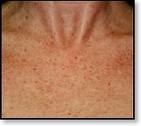 The second area is on the chest. Brown spots and red spots occur with age and again.....the sun. Sun worshipers get this and the more you worship the worse it gets.
The second area is on the chest. Brown spots and red spots occur with age and again.....the sun. Sun worshipers get this and the more you worship the worse it gets.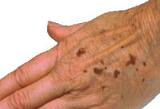 The third area is on the hands. Age spots, liver spots, whatever you want to call them are caused by sun damage and can be present over the entire arm.
The third area is on the hands. Age spots, liver spots, whatever you want to call them are caused by sun damage and can be present over the entire arm.

.jpg) On the face maybe??
On the face maybe??.jpg) Feel like you are wearing a sweater all the time due to unwanted back, arm, or chest hair??
Feel like you are wearing a sweater all the time due to unwanted back, arm, or chest hair??.jpg) Tired of shaving those legs?? That's a lot of real estate to manage isn't it??
Tired of shaving those legs?? That's a lot of real estate to manage isn't it??.jpg) Maybe you are tired of managing hair in those unmentionable places??
Maybe you are tired of managing hair in those unmentionable places??.jpg) Tweezers have been a common tool along with razors, shavers, and even hot wax. Everyone has seen movie scenes where the star is punished by waxing large tracts of hair (40 Year Old Virgin)....it looks terribly painful and not much fun.
Tweezers have been a common tool along with razors, shavers, and even hot wax. Everyone has seen movie scenes where the star is punished by waxing large tracts of hair (40 Year Old Virgin)....it looks terribly painful and not much fun.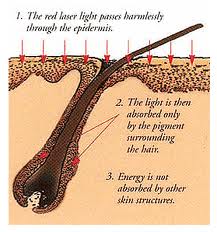.jpg) When the appropriate laser light and energy are used, the hair conducts heat into the bulb of the hair and when in a growth phase, the stem cells are heated and damaged. Over multiple treatments, the bulb is damaged to the point that it can no longer produce hair. Multiple treatments are required due to the fact that hair grows at different rates and some follicles are actively producing and some are dormant. New follicles can also generate in areas that have never produced hair.... i.e. the new hair that forms on your face or back that was never there before. Lasers and IPL can be used in essentally all areas to remove hair. The most effective areas are for body hair. Because it is usually dark and thick, it conducts the heat into the follicle most effectively. Body hair can usually be reduced by 80% or more in just six treatments 6 weeks apart. Facial hair is usually thinner and less dark. Therefore, it usually requires 9 treatments 6 weeks apart or more for lighter hair. Very light white hair is usually not conducive to laser as it reflects all light and does not conduct heat.
When the appropriate laser light and energy are used, the hair conducts heat into the bulb of the hair and when in a growth phase, the stem cells are heated and damaged. Over multiple treatments, the bulb is damaged to the point that it can no longer produce hair. Multiple treatments are required due to the fact that hair grows at different rates and some follicles are actively producing and some are dormant. New follicles can also generate in areas that have never produced hair.... i.e. the new hair that forms on your face or back that was never there before. Lasers and IPL can be used in essentally all areas to remove hair. The most effective areas are for body hair. Because it is usually dark and thick, it conducts the heat into the follicle most effectively. Body hair can usually be reduced by 80% or more in just six treatments 6 weeks apart. Facial hair is usually thinner and less dark. Therefore, it usually requires 9 treatments 6 weeks apart or more for lighter hair. Very light white hair is usually not conducive to laser as it reflects all light and does not conduct heat.

.jpg) (Typical WWII era tattoo...single color, small in size, shallow depth of ink)
(Typical WWII era tattoo...single color, small in size, shallow depth of ink).jpg) (new tattoo...larger, more colors, broad spacing, deeper pigment)
(new tattoo...larger, more colors, broad spacing, deeper pigment)